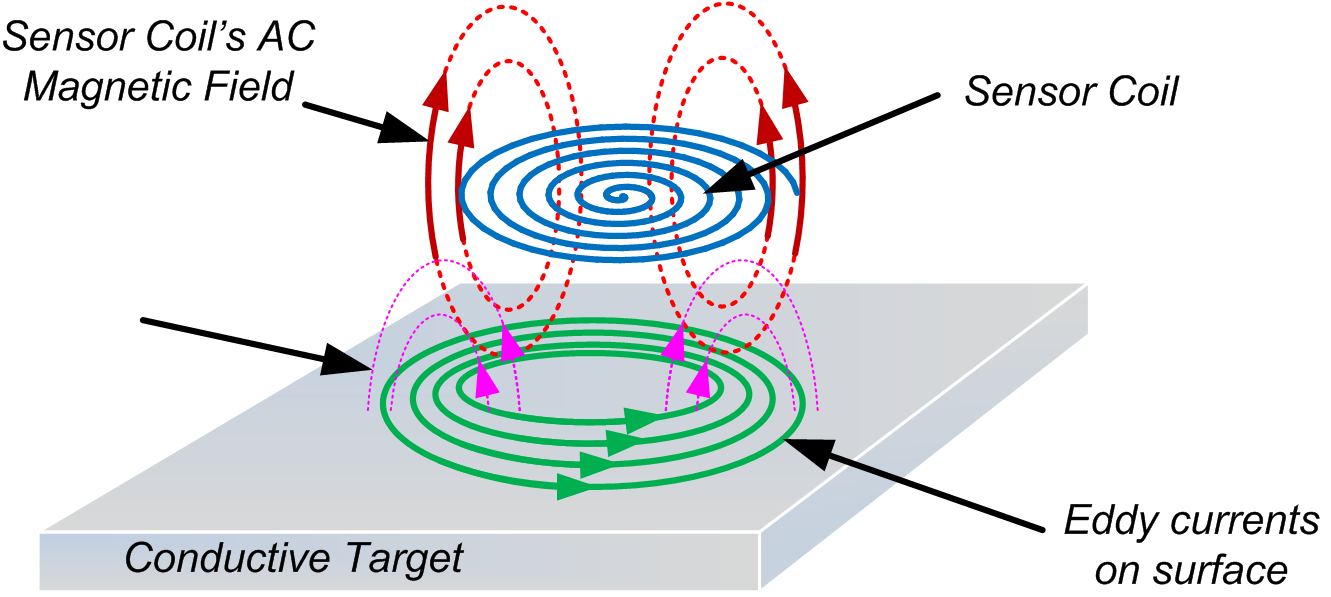SNOA957B September 2016 – June 2021 LDC0851 , LDC1001 , LDC1001-Q1 , LDC1041 , LDC1051 , LDC1101 , LDC1312 , LDC1312-Q1 , LDC1314 , LDC1314-Q1 , LDC1612 , LDC1612-Q1 , LDC1614 , LDC1614-Q1 , LDC2112 , LDC2114 , LDC3114 , LDC3114-Q1
2 Eddy Currents
Whenever a conductor interacts with an AC magnetic field, eddy currents are induced on the conductor’s surface. Lenz’s Law states that induced currents will flow in a manner to oppose the magnetic field, which weakens the original magnetic field in a measurable way. LDC devices use an inductor in a resonant circuit to generate an AC magnetic field, as shown in Figure 2-1. Any generated eddy currents will weaken the inductor’s magnetic field, which effectively reduces the inductance of the resonant circuit, which is typically detectable by the LDC. Depending on the device, an LDC measures either the shift in resonance and/or the energy losses in the resonant circuit and in the target (due to the eddy currents).
 Figure 2-1 AC Magnetic Field Interaction With Conductor
Figure 2-1 AC Magnetic Field Interaction With Conductor